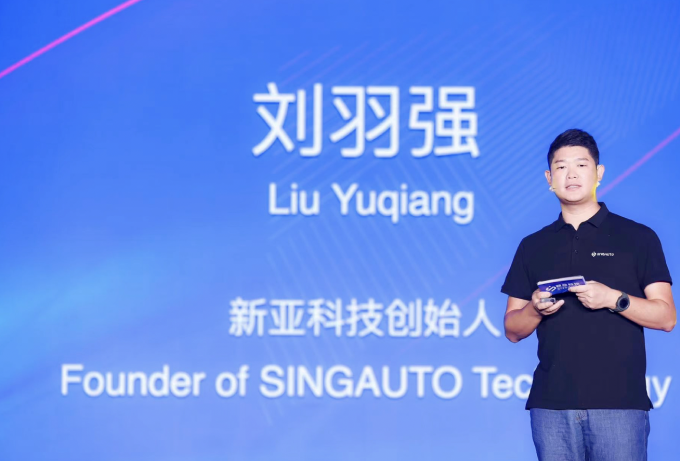In order to solve the energy replenishment pain points in the development of new energy commercial vehicles, Xinya Technology not only launched new commercial vehicle products, but also released a fully automatic charging vehicle to improve energy replenishment efficiency.
Signed contracts with three customers at one time, and signed strategic investment agreements with DAEJI P&I, Cynergy Global Investment Company, Turing Qiushi and other institutions. On September 21, Xinya Technology made a lot of achievements in its debut in Beijing.
As a company from Singapore, Xinya Technology is committed to promoting change and innovation in the global new energy smart cold chain logistics market. Company founder Liu Yuqiang said at the press conference that night: Xinya Technology is looking for more innovative new energy and intelligent commercial vehicle solutions to create new service models and energy models.

Liu Yuqiang, founder of Xinya Technology
As the world’s largest new energy vehicle market, China’s new energy penetration rate for commercial vehicles is also steadily increasing. Data from the Passenger Car Association shows that in August this year, the penetration rate of new energy commercial vehicles reached 12.9%. Compared with 8.9% in the same period last year, the upward trend in penetration rate is very significant. In the first eight months of this year, the penetration rate of new energy commercial vehicles totaled 8.4%, which has also achieved good growth compared with 2022.
Because of this, commercial vehicles are becoming the next market segment that various car companies and technology companies are competing for. Especially considering that some commercial vehicles are used in specific work scenarios, autonomous driving is expected to come to fruition sooner. For example, in mines and ports, some driverless solutions are accelerating commercial implementation.
At this press conference, New Asia Automobile launched the new new energy cold chain vehicle S1 in China. Official data shows that the Xinya S1 is 5,995mm long and has a storage capacity of more than 18 m³. Equipped with a 106kWh battery pack, it can provide a driving range of 300km. Fast charging from 0 to 80% takes only 40 minutes, and the supported battery swap mode can complete quick battery replacement in 5 minutes. In addition, the S1 also supports OTA upgrades for the entire vehicle, and has high-tech configurations such as L4-level assisted driving, intelligent central control, and walk-in cockpit.

New energy cold chain vehicle, Xinya S1
However, it should be pointed out that although China’s new energy commercial vehicles are accelerating the development, there are still some factors that hinder the further development of smart electric commercial vehicles. Lu Huaping, secretary-general of the National New Energy Commercial Vehicle Market Information Association, once pointed out that a major difficulty in popularizing new energy commercial vehicles is that the facilities for new energy commercial vehicles in cities are still insufficient.
In this regard, while New Asia Automobile launched the new new energy cold chain vehicle S1 in China, it also released a fully automatic charging vehicle to improve energy replenishment efficiency.
As a new energy automatic charging vehicle, Xinya E1 is 2200mm long, 980mm wide and 1400mm high. The entire vehicle is equipped with 2 high-precision radars and 2 cameras, combined with 8 ultrasonic sensors, to achieve all-round obstacle detection and tracking. Xinya Technology said that E1 can quickly charge Xinya vehicles through one-click call through the mobile phone APP, thereby improving logistics efficiency.

New energy automatic charging vehicle, Xinya E1
In addition to the new energy cold chain vehicle S1 and the new energy automatic charging vehicle E1, Xinya Technology also released a concept product for smart commercial vehicle solutions – V1. This vehicle is 5545mm long, 2100mm wide and 2150mm high. , with a cruising range of up to 320km and a vehicle mass of 2.3 tons. According to Xinya Technology, V1 is designed to provide response capabilities for different business scenarios. Whether it is urban express delivery or long-distance logistics transportation, it can be adjusted according to different goods and needs to fully meet changing business needs.
